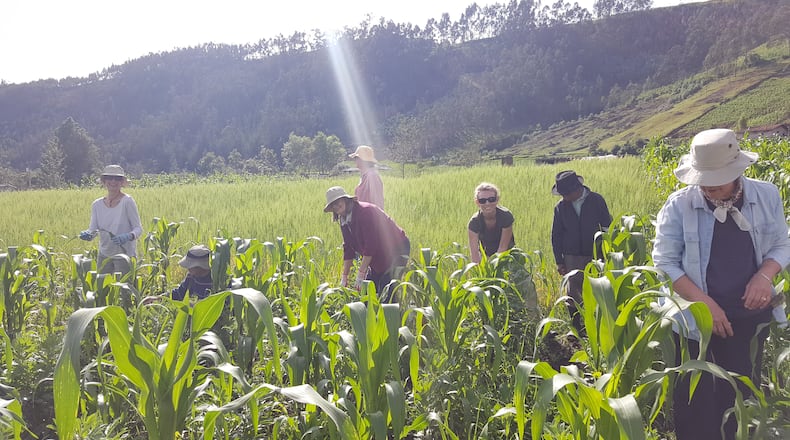Thanksgiving meals bring me memories of the three sisters method of gardening. My memories are from being in Ecuador during planting season in the indigenous communities and experiencing this method firsthand.
We watched with fascination as the families all worked together to plant corn, beans, and squash. There was something deeply moving about watching this tradition that has been passed along for many generations in the Andean community. This is the only way they plant these three vegetables.
I have had the opportunity to lead Master Gardener Volunteers (MGV) for 11 years in the highland Andean area of Otavalo as part of the Tandana Foundation’s work. I learned early on that if they don’t plant their vegetables, they don’t eat.
The foundation has staff and volunteers working in Ecuador and Mali, weaving friendships and strengthening communities. We are multiple hands that help communities complete projects focused on tree planting and gardening.
Everywhere we go in the highland area, we see the three sisters plantings. One year, we had an opportunity to help a family plant. We aren’t there to teach the how; they have been doing this for generations. We were there to help and learn.
They dig a hole that is about 8-10 inches deep, then plant three seeds each of corn, squash (like a hubbard or winter squash), and fava beans in each hole. As the plants grow, they thin out the corn to one plant and train the fava beans to climb the sturdy corn plant. The squash covers the ground, hopefully keeping weeds down.
The corn serves as the support for the beans. The beans provide nitrogen as they are legumes and “fix” nitrogen. Fixing nitrogen is the process of converting inert atmospheric nitrogen into a compound that plants can use. Thus, the plants have nutrients.
Fava beans are like lima beans, except they are firm and meaty. When cooked, they still have a bit of a crunch. Lima beans are sweeter and creamier when cooked. Fava beans are a little larger and flatter and have more much-needed protein. Meat is typically reserved for special occasions.
The experience of traveling and working in another country is one that most MGVs never forget. We have all the comforts needed; many of them living in the communities above Otavalo don’t have electricity, running water, or concrete floors.
Some would consider the indigenous people living in the rural highlands poor. They are not. They are rich with culture, tradition, and love for Mother Earth. They live at a slower pace.
If you are interested in learning more about this incredible cultural, giving, and immersive experience, go to www.tandanafoundation.org
As one traveler said, “You need to go and discover this beautiful experience of giving to the community. The peace and love that you feel cannot be put into words.
Pamela Corle-Bennett is the state master gardener volunteer coordinator and horticulture educator for Ohio State University Extension. Contact her by email at bennett.27@osu.edu.
About the Author

